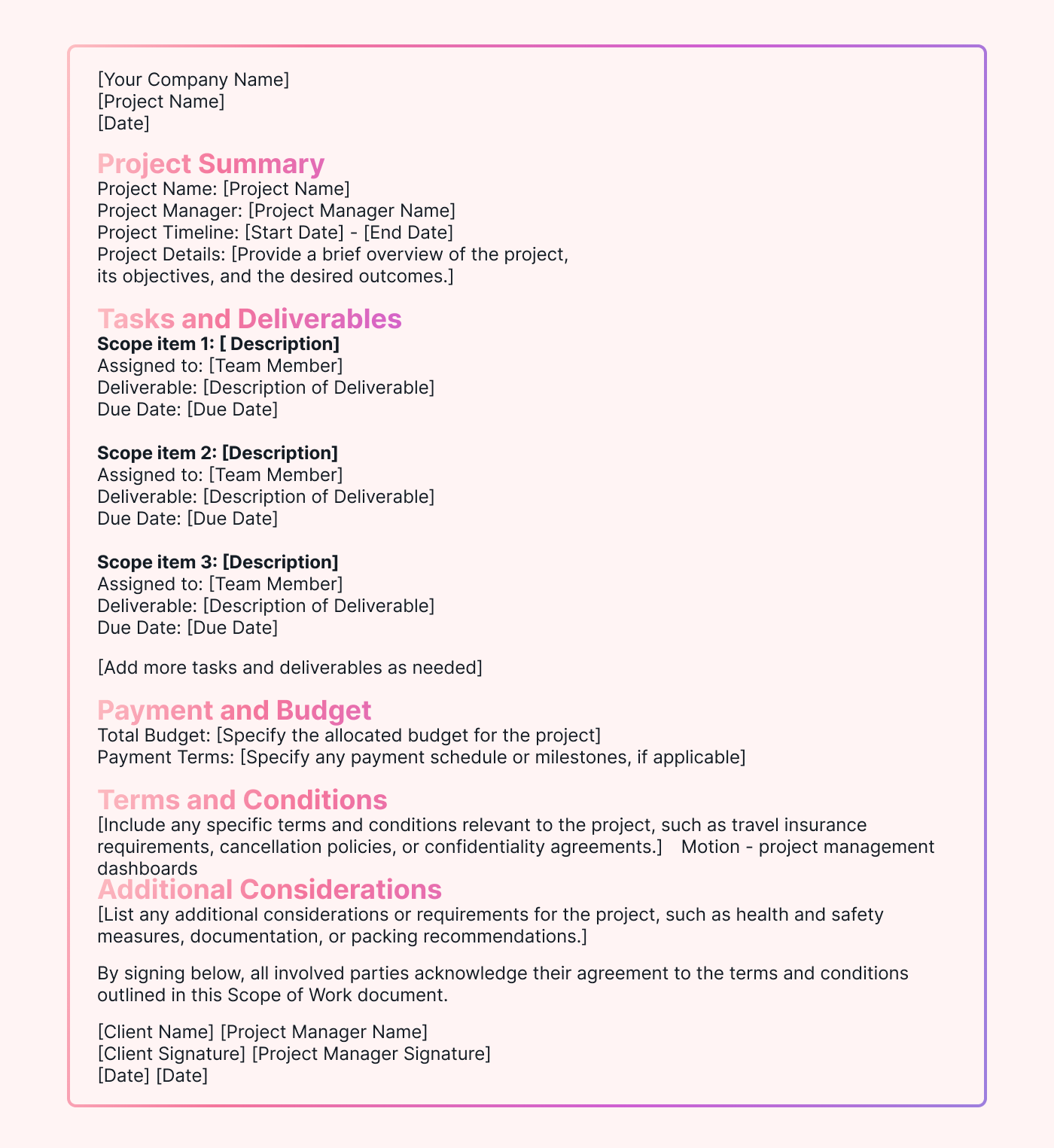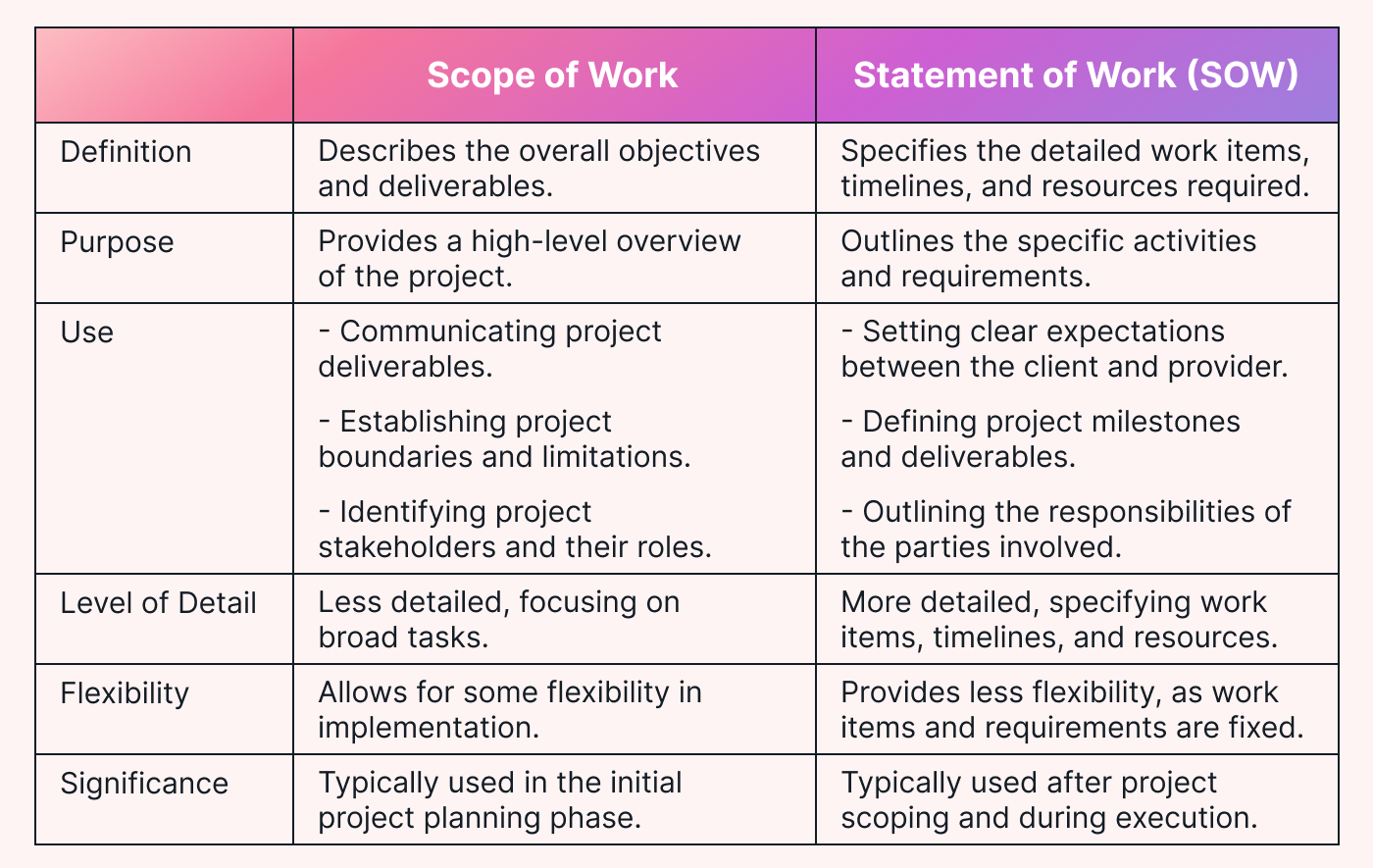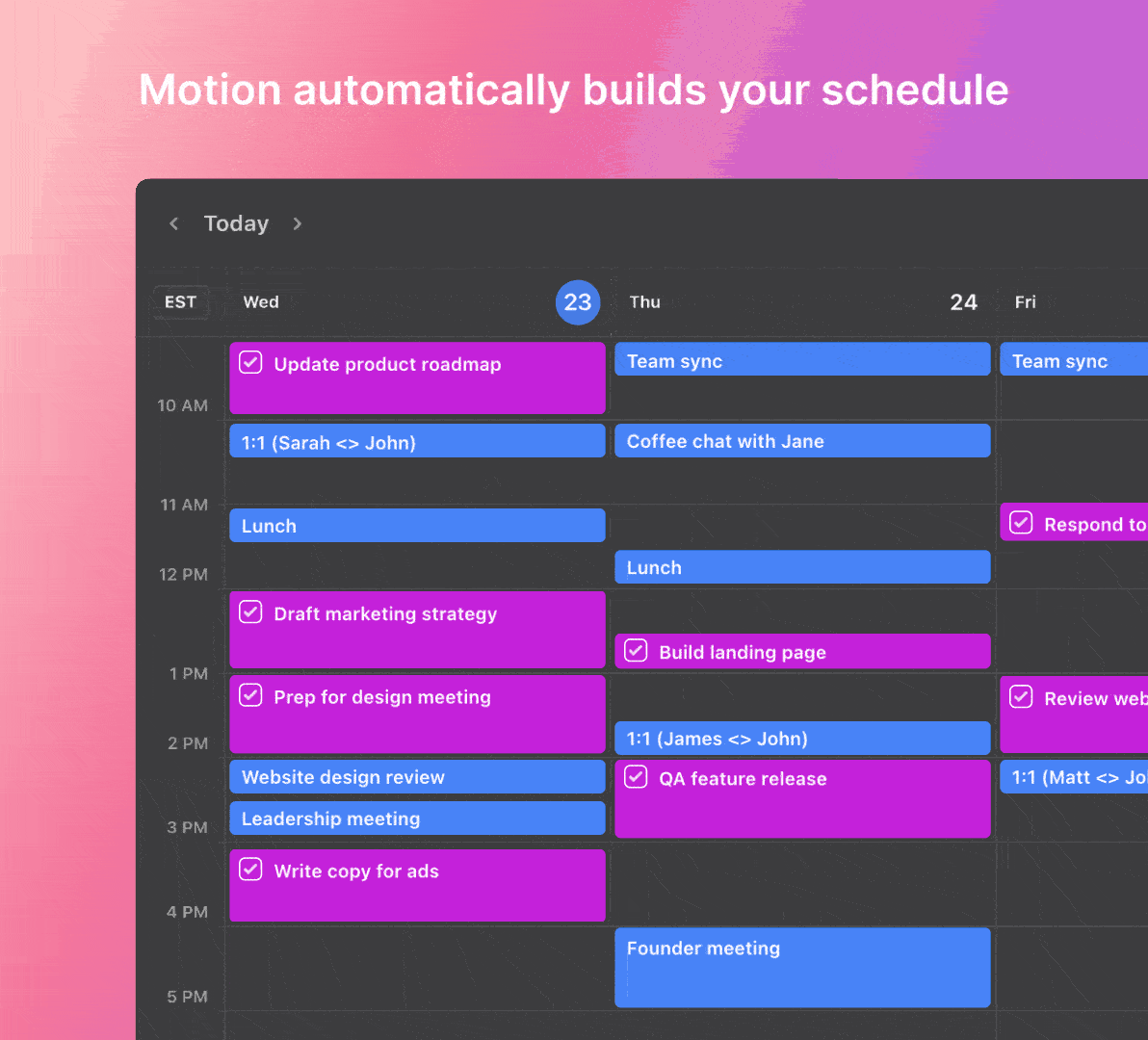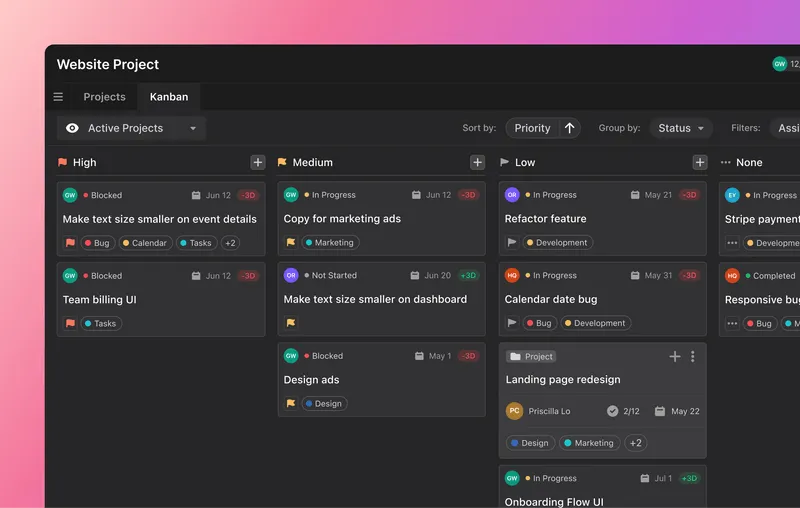Tired of unclear project objectives, misaligned expectations, and creeping project scopes? Are your vendors or stakeholders confused about what to expect? Is your team unclear about project deliverables and what they need to do?
If you answered yes to any of the above, you can benefit from a solid scope of work.
A scope of work document can help to clear up any misconceptions or assumptions about your project and provide scope clarity.
In this article, we’ll dive into a scope of work, providing valuable insights, examples, and an easy-to-adapt template. We'll explore the power of a well-defined scope of work and how it can transform your project management experience.
What is a scope of work document?
Think of a scope of work document as your project's game book. One that outlines the who, what, when, and how of getting things done (work or tasks). This helps to make sure everyone involved knows their part. It also outlines precisely what the project boundaries consist of to help avoid any possible misconceptions.
In other words, it helps to avoid the dreaded “I thought this was included?” or “I thought that was John’s role?” moments.
 |
In official terms, it is an internal document that defines the project’s boundaries, objectives, tasks, milestones, and deliverables. When done right, the project scope of work document has a ton of benefits (which we’ll go over later). It also links to the project charter and reinforces your project/business mission.
Let’s say we are designing a website. The scope of work will break down the main work into tasks like wireframing, coding, testing, and launch. It’ll outline deadlines like finishing coding in six weeks and testing four weeks later, and list the products or deliverables that need to be produced by this project— the actual site and its iterations.
Scope of work vs. statement of work
If you work in project management, you might come across a similar (yet distinct) sounding document— the statement of work (SoW). While their purposes are somewhat interconnected, the scope of work and SoW play different roles in a project.
A scope of work document is primarily an internal compass that outlines the project regarding what is to be done. On the other hand, the SoW serves as a contractual handshake between you and the client. It's the nitty-gritty agreement (formal document) that includes payment terms and additional specifics.
 |
Think of it this way: the scope of work directs your project team's efforts, while the SoW solidifies your commitments to the client.
Why do we need a scope of work?
There are several reasons to use a scope of work document, but we'll focus on the three most immediate and direct benefits.
Sets clear expectations for stakeholders
Misaligned expectations can be a project's Achilles' heel!
A well-crafted scope of work sets the foundation for mutual understanding. Since is contains detailed descriptions (and timelines) of the work, stakeholders can see what's expected. No more "I thought you meant…" moments.
Outlines and defines the scope
Have you ever seen an artist create a masterpiece that starts as a chaotic swirl of colors? Outlining the project scope is like sketching the fine lines that turn chaos into clarity.
The project manager typically captures the project scope within the scope of work document by concisely and thoroughly outlining what's included (and excluded) from the project.
Sometimes, a project manager might do a project or business scope analysis before writing a scope of work.
The outline and scope, or parts thereof, are also used for other project artifacts, like the business case or project plan.
Prevents scope creep
Scope creep is when project boundaries expand beyond predetermined constraints. It can turn your well-planned project into the Wild West of uncontrollable tasks, budget, and scope.
Imagine you want to build a house, have already designed it, and finalized the plans. You've decided on a modern style, but since you forgot to share that with the builders, the project has become a mishmash of other styles. So you end up adding more budget and time to get the desired result. That's a form of scope creep.
You could have avoided the problem by using a scope of work. It'd have set clear perimeters that state what's part and not part of the project scope.
Critical information to include in a scope of work
The scope of work document contains a few critical project details.
 |
Let's go over what to include in yours (and how to collect the information).
Deliverables
Deliverables are the "what" in the project. They are the tangible results your project aims to achieve. Think about the concrete products, reports, prototypes, or documents that'll come from your team's efforts.
While they might not always be project milestones, they set the stage for significant project moments.
To draft a good project deliverable description, you need clarity, specificity, and purposefulness. Ask yourself these questions:
- What problem does it solve?
- What value does it add?
- What are the acceptance criteria that signal it's ready for review?
Timeline
The timeline is the “when” of the project. It’s more than just a few dates on a calendar; it sets the pace of the project from start to finish.
Gather data like start and end dates, milestone deadlines, and critical phases to create your timeline.
With your data in hand, craft your timeline using tools like Gantt charts or project planning software like Motion. You can also map it on a whiteboard or outline it in a document.
Milestones
Milestones are part of the “how” of the project.
Imagine you’re a mountain climber going up Everest without any signs, maps, or GPS. You'd be lost in a sea of uncertainty, right? Well, that's precisely what milestones prevent in your project.
 |
By identifying milestones, you're essentially pinpointing the key achievements or stages that indicate progress in the right direction. These could be major deliverables, critical project phases, or significant decisions.
So, how do you go about flagging your milestones? Start by breaking down your project into its major components. Then, think about the moments that mark the completion of these components. These are your milestones.
Reports
We've already gone over the importance of a well-crafted scope of work and the clarity it provides. Now it's time to layer insight over that clarity with reports.
Reports give insights into project progress, and help you stay on track to deliver a successful project.
Think about adding different types of reports that help with specific insights. Here are three good ones to start with:
- Status reports: Gives a snapshot of where your project stands.
- Budget reports: Provides a clear view of your project’s financial health.
- Risk assessments: Identifies potential roadblocks (and strategies to deal with them).
Scope of work example #1: event planning
Let's dive into an example of an effective scope of work in action. Imagine we're planning an event for a project.
Project name: Best Corporate Meeting Ever
Project summary: Elevate a standard corporate gathering into an immersive experience.
Project timeline: Starting on July 9, 2023 – November 23, 2023
Scope item 1. Venue selection:
Research, shortlist, negotiate contracts, and coordinate logistics for the perfect event setting.
- Assigned to: The Venue Whisperer
- Deliverable: Secured, contract-bound venue
- Due date: Within four weeks
Scope item 2. Vendor management:
Identify top vendors, manage contracts, and ensure on-time deliveries for catering, entertainment, and decor.
- Assigned to: Vendor Maestro
- Deliverable: On-time catering, entertainment, and decor
- Due date: 8 weeks before the event
Scope item 3. Guest management:
Create guest lists, send invitations, manage RSVPs, and coordinate transportation and accommodations.
- Assigned to: Social Connector Extraordinaire
- Deliverable: Curated guest list, seamless attendee experience
- Due date: 10 weeks before the event
Scope item 4. Event timelines:
Craft a detailed project schedule and set key milestones for progress trackers.
- Assigned to: The Time Guru
- Deliverable: Minute-by-minute event schedule, milestone roadmap
- Due date: 6 weeks before the event
Scope item 5. Budget management:
Manage expenses within allocated funds, track payment schedule, and alert if going over.
- Assigned to: The Financial Virtuoso
- Deliverable: Balanced budget and favorable ROI
- Due date: Ongoing, throughout the project
Scope of work example #2: marketing campaign
Let's dive into another example, this time for a marketing campaign.
Project name: Ignite Brand Education
Project summary: Elevate brand visibility and engagement through a dynamic marketing campaign.
Project timeline: Kicking off on September 9, 2023
Scope item 1. Market research:
Identify target audience, analyze consumer behavior, and gather insights to inform campaign strategy.
- Assigned to: The Insight Explorer
- Deliverable: Refined target audience profiles and comprehensive consumer insights
- Due date: Within 3 weeks
Scope item 2. Creative development and content creation:
Brainstorm innovative campaign concepts, design captivating visuals, and craft engaging copy to resonate with the audience.
- Assigned to: The Creative Visionary
- Deliverable: A portfolio of captivating campaign materials
- Due date: 6 weeks before launch
Scope item 3. Channel selection and media planning:
Strategically determine the most effective marketing channels, creating a media plan to maximize campaign impact.
- Assigned to: The Channel Strategist
- Deliverable: A comprehensive media plan detailing channel selection and campaign timeline
- Due date: 8 weeks before launch
Scope item 4. Measurement and analysis:
Define key performance indicators (KPIs). Track and analyze campaign results. Monitor website traffic and conversion rates. Assess the campaign's influence on brand awareness and customer engagement.
- Assigned to: The Analytics Maven
- Deliverable: In-depth analysis of campaign performance and its impact on brand metrics
- Due date: Ongoing throughout the campaign; scheduled for every 2 weeks.
Write and deliver a scope statement in 3 steps
Now that you know what to include in your scope of work statement (and have seen some examples), it’s time to create your own in three easy steps.
1. Organize your data
In the previous section, we spoke about the key elements of a good scope statement and how to gather them. Now, you need to organize that information to populate the document.
2. Create the scope of work document
In this step, you simply populate your scope of work document with the information from step one.
You can either use and adapt the samples above or create your own scope of work document from scratch. Either way, avoid ambiguous language, vague deadlines, or simple scope items.
If you are creating your scope of work from scratch, you'll want to follow a logical order and lay the items out in a way that's easy to read (like in our examples).
3. Deliver the scope of work
Next, you'll want to review the scope of work with the project team and get buy-in from your internal stakeholders (which, by the way, helps you set expectations and helps avoid scope creep).
The scope of work document will be a living document. I.e. it might need changes over time, which means you'll want to keep this document live (and editable).
Implement your scope of work with Motion
Now that you know how to create and use a scope of work, it's time toimplement your own. Project management software like Motion can help you keep your project data centralized (no more app hopping) and execute your plan.
Motion offers a few key features that can help you plan and implement your scope of work tasks (and more).
One of Motion’s most powerful features calculates important task factors and arranges work for team members. It reviews priority, deadlines, and available working hours of all involved in the project and schedules those tasks at the best time.
Motion will also notify you if one of your project tasks is off track to help you minimize delays (which can eat into your scope).
 |
With Motion's drag-and-drop task management feature, you can easily adjust the timing and sequencing of tasks. This flexibility can help you to adapt to changes, accommodate shifting scope priorities, and optimize your schedule as necessary.
Sign up for your 7-day free trial.







